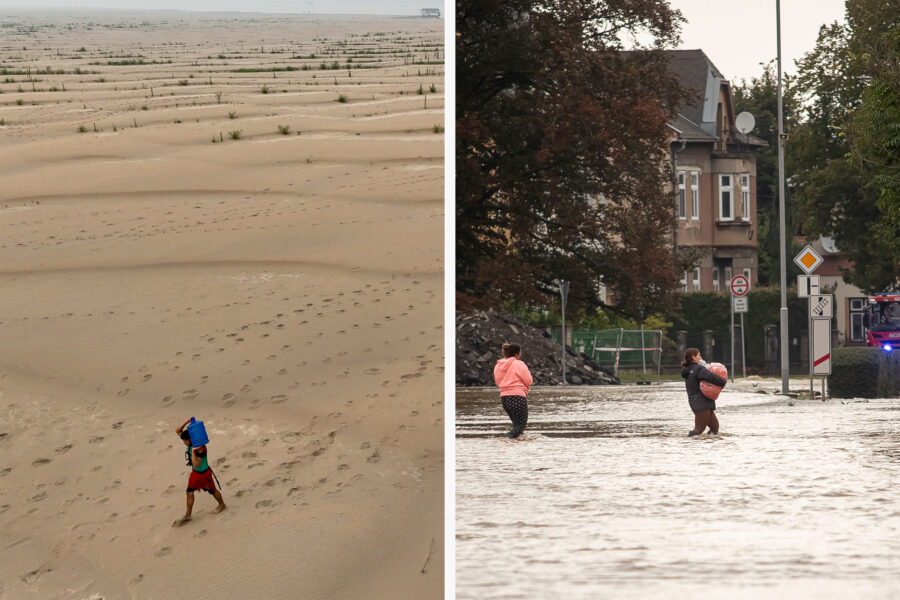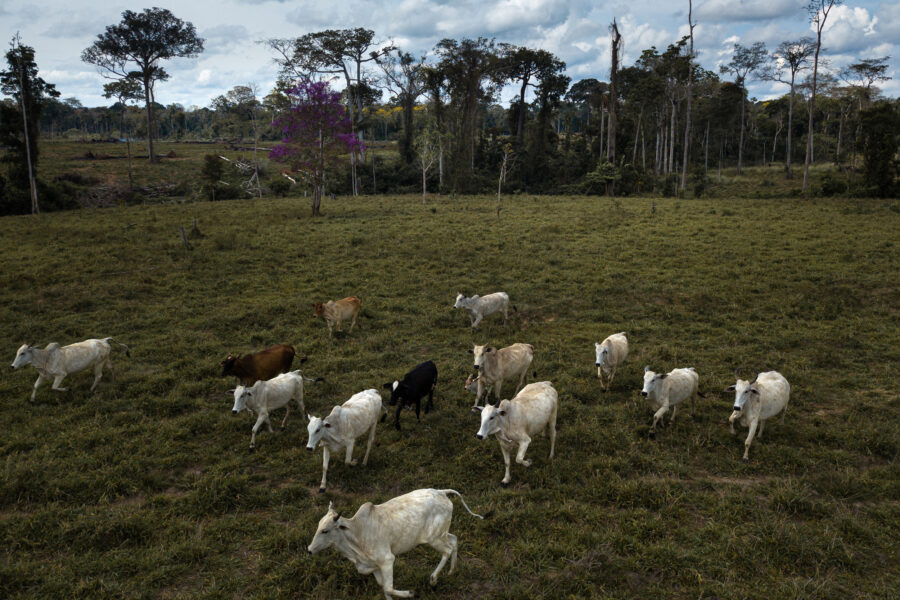The Aspen Institute Is Calling for a Systemic Approach to Climate Education at the University Level
In 2019, Laura Schifter’s phone buzzed with a message: “Only 11 Years Left to Prevent Irreversible Damage From Climate Change.” As she lifted her eyes from her phone back to her three children playing in her basement, she knew she had to fight for them.
Their future wasn’t only up to the environmentalists, she remembers thinking. It was also up to her. “We all have a role to play in advancing solutions,” said Schifter, who was trained as an educator.
Her role was to spread awareness.
Schifter is now a senior fellow with the Aspen Institute’s This Is Planet Ed, a program to prepare children and young adults to thrive in a changing climate and empower them with climate knowledge.
This month, This Is Planet Ed released its Higher Ed Climate Action Plan that calls for a systemic approach to climate education at the university level.
Explore the latest news about what’s at stake for the climate during this election season.
The report lays out a plan for all universities to partake in climate-focused operations, research, education and community engagement. Not only does the action plan push for universities to make their campuses more sustainable, but it calls for students to engage in climate action through education.
Multiple universities, including Arizona State University and University of California San Diego, are requiring students to take climate change courses starting in the 2024-2025 academic year, preparing the students who will soon be part of the nation’s workforce for one of the world’s toughest challenges: solving the climate crisis.
Other institutions, such as Columbia, Harvard, and Stanford, are taking the climate focus a step further and establishing entire schools devoted to climate.
And some are becoming living laboratories, testing new energy- or water-efficient buildings and other solutions around campus. For example, students at the University of Washington, Bothell, are studying on-campus nature-based solutions. The Cascadia wetland runs through the Bothell campus, northeast of Seattle, as a restored floodplain filled to the brim with salmon species. Also on campus, the Sarah Simonds Green Conservatory greenhouse is decorated with native plants—with beds showcasing plantings and experiments—surrounding classroom spaces.
Although these universities are all taking different approaches to improve sustainability and climate education, administrators say they are all responding to the same need: educating students who care deeply about the climate crisis, according to public opinion surveys.
An eco-anxiety study with a sample size of 10,000 found that about 75 percent of 16-25-year-olds from 10 countries, including the United States, said “the future is frightening,” and 83 percent “think people have failed to take care of the planet.”
Schifter understands students’ sentiments: “People have shifted into the assumption that we can control our climate,” she said. “As our climate increasingly changes, it is evident we can’t.”
About 19 million students are enrolled annually in four-year colleges and universities in the U.S., creating significant demand for the nation’s 4,000 higher education institutions to develop programs for climate education and action.
“We need to be having conversations with [students] about things they care about,” said Michael Scott, the dean at Salisbury University on Maryland’s Eastern Shore, which is threatened by sea level rise.
Salisbury is one of the many universities adding climate courses to their general education requirements.
The goal of these courses is to “open people’s minds to other perspectives,” said Daniel W. Harris, a professor of geology and geosciences.
Despite the burgeoning emphasis on, and interest in, climate change as a course of study, many faculty and students have yet to link the vast implications flowing from a warming planet to their particular areas of study. “Most faculty and students don’t see the relevance of their courses and major areas of concentration to climate change,” said Harris’ colleague, Karl Maier, a psychology professor.
A lot of work needs to be done to convince people that climate change is interdisciplinary, Harris said. It does not only have to do with the environment or geology. Sustainability, he said, applies to subjects as varied as economics, psychology, engineering, and sociology.
He says this is why universities are implementing general education climate courses to bring students of all disciplines together. Students interested in business, medicine, history, or another subject now have an opportunity to learn about climate change and how it interacts with their own interests.
“You’d be surprised at how many businesses need to know about climate and climate change to be successful,” said Harris.
Water scarcity and temperature changes can harm the food industry. Sea level rise can alter iconic tourism destinations. Extreme weather can raise insurance premiums.
Climate change affects all industries, making climate education ever more crucial for students of all disciplines as they prepare to enter the workforce, said Harris.
The Aspen Institute’s action plan aims to bring sustainability to the forefront of each student. “The way you engage people is to allow them to be interested in whatever they are interested in, but now you have to teach that within the context of a changing climate,” said Schifter.
Everyone has a role to play in combating the climate crisis whether they are a student, an educator, or a business person, Schifter said.
About This Story
Perhaps you noticed: This story, like all the news we publish, is free to read. That’s because Inside Climate News is a 501c3 nonprofit organization. We do not charge a subscription fee, lock our news behind a paywall, or clutter our website with ads. We make our news on climate and the environment freely available to you and anyone who wants it.
That’s not all. We also share our news for free with scores of other media organizations around the country. Many of them can’t afford to do environmental journalism of their own. We’ve built bureaus from coast to coast to report local stories, collaborate with local newsrooms and co-publish articles so that this vital work is shared as widely as possible.
Two of us launched ICN in 2007. Six years later we earned a Pulitzer Prize for National Reporting, and now we run the oldest and largest dedicated climate newsroom in the nation. We tell the story in all its complexity. We hold polluters accountable. We expose environmental injustice. We debunk misinformation. We scrutinize solutions and inspire action.
Donations from readers like you fund every aspect of what we do. If you don’t already, will you support our ongoing work, our reporting on the biggest crisis facing our planet, and help us reach even more readers in more places?
Please take a moment to make a tax-deductible donation. Every one of them makes a difference.
Thank you,
David Sassoon
Founder and Publisher
Vernon Loeb
Executive Editor
Share this article
Disclaimer: The copyright of this article belongs to the original author. Reposting this article is solely for the purpose of information dissemination and does not constitute any investment advice. If there is any infringement, please contact us immediately. We will make corrections or deletions as necessary. Thank you.








